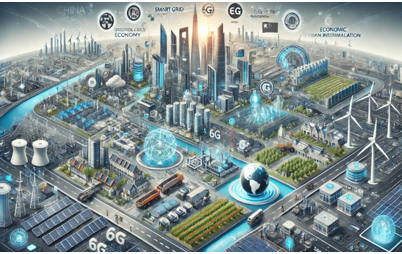INP-WealthPk
Qudsia Bano
China’s vision for 2026–2030 marks the start of a transformative phase focused on high-quality growth, scientific advancement, and deeper reform. For Pakistan, this vision presents a significant opportunity to reshape its economic partnership with China and move toward a more innovation-driven, sustainable, and value-added collaboration that goes beyond the traditional infrastructure projects.
The agenda approved at the Fourth Plenary Session of the 20th Central Committee emphasizes the development of a modern industrial system, strengthening the real economy, and promoting new quality productive forces built on advanced manufacturing, technology, and integrated supply chains. For Pakistan, this provides a chance to transition from being primarily a host of infrastructure projects to becoming an active contributor to industrial production networks aligned with Chinese firms.
Dr Ejaz Hashmi, Professor of Economics at the National University of Modern Languages (NUML), said this is a critical moment for Pakistan, stressing that swift policy alignment, improved governance, and workforce readiness are essential. He noted that the countries capable of keeping pace with China’s technological modernization will reap huge benefits in terms of industrial growth and competitiveness. Scientific and technological self-reliance is a central pillar of China’s plan.
The agenda seeks breakthroughs in core technologies while fostering the integration of education, research, and industry. Pakistan has an opportunity to form joint ventures in electronics, precision engineering, and digital manufacturing. Leveraging China’s technological expertise alongside its own growing pool of engineers, IT specialists, and technical professionals can help Pakistan shift from traditional export sectors like textiles toward higher-value, technology-intensive industries.
This approach could support economic diversification, strengthen Pakistan’s global competitiveness, and accelerate industrial modernization. High-standard opening up is another major feature of the 2026–2030 vision. China aims to deepen international cooperation, encourage two-way investment, and expand its engagement in global value chains. Pakistan can use this opening to present itself as a reliable base for Chinese companies seeking to regionalize production and diversify supply networks.
Qurrat-ul-Ain Cheema, CEO of the Global Engineering Network for Innovation and Intelligence (GEN_II), noted that China’s upcoming plan offers a transformative framework for partner countries. She highlighted the potential for innovation-led growth, climate cooperation, and digital modernization. Cheema emphasized the importance of joint incubation centres, youth-focused innovation platforms, and collaborative research initiatives between Pakistan and China, describing them as critical to building a shared corridor of technology, talent, and trust.
Green development and environmental modernization also feature prominently in China’s agenda. The plan encourages ecological protection, low-carbon growth, and sustainable industrialization. For Pakistan, which faces chronic energy shortages, water stress, and climate vulnerabilities, collaboration in renewable energy, energy storage, green manufacturing, and clean technology can support sustainable growth. Partnerships in solar, wind, hydrogen, and electric vehicle supply chains can create new jobs, enhance energy security, and contribute to low-carbon industrial development.
China’s emphasis on digital transformation, smart infrastructure, and modern service sectors adds another layer of opportunity. Pakistan can expand its digital economy, improve financial connectivity, and enhance public service delivery while attracting investment in high-tech sectors. Strategic cooperation in AI-based governance, telemedicine, digital education, and cloud computing can strengthen skill development, foster innovation, and modernize institutions.
As China enters this new development phase, Pakistan’s opportunity lies not only in maintaining bilateral cooperation but in evolving into a credible, forward-looking partner. By aligning with China’s 2026–2030 vision, Pakistan can unlock a new chapter of growth driven by technology, innovation, sustainability, and shared economic transformation. This period marks a shift from traditional infrastructure-led engagement to high-value industrial, technological, and green collaboration, positioning Pakistan to play a proactive role in shaping the next decade of strategic partnership in Asia.

Credit: INP-WealthPk




